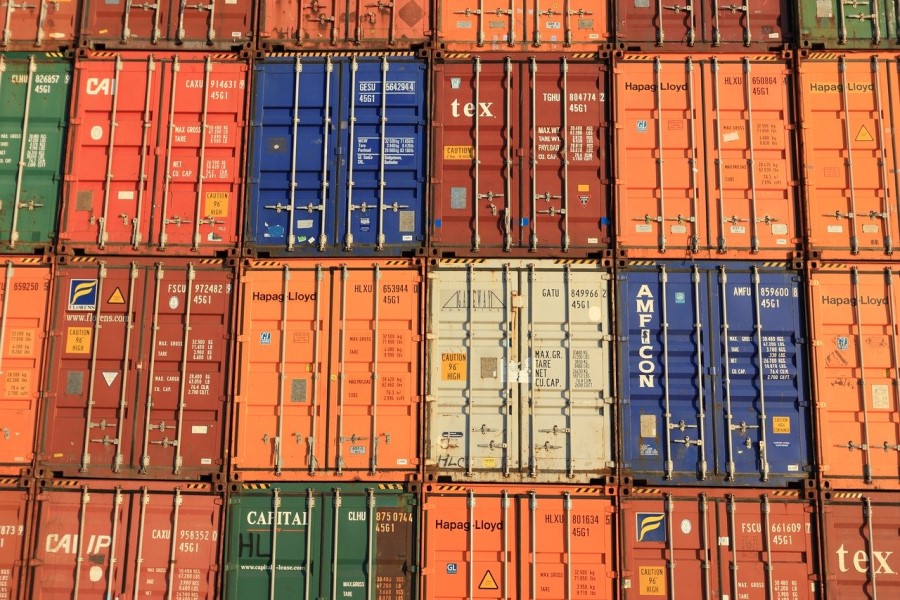 COVID-19 and Brexit are putting our value chains in danger. How can an economic diversification strategy help in this process? And what can local and regional governments do about it?
COVID-19 and Brexit are putting our value chains in danger. How can an economic diversification strategy help in this process? And what can local and regional governments do about it?
COVID-19 and Brexit are affecting the UK industrial fabric in different ways, but in particular, the sudden deglobalisation effects they create can lead to trade demand and supply disruptions.
The virus outbreak, which initially led to temporary closures of factories in the Chinese province of Hubei, caused disruptions in production on many continents. Hubei accounts for only 4.5% of Chinese GDP, but it is a high-tech manufacturing hub, home to local and foreign firms highly integrated into global supply chains in the automotive, electronic, and pharmaceutical industries (Financial Times). Across the world a combination of lower incomes and the fear of contagion have resulted in lower private spending, which an increase in government spending can only partly compensate for. On the supply side, with factories either closing or operating below capacity and large numbers of employees prevented from working, less output is being produced. Emerging evidence from China and a select number of developed countries suggest a drop in demand, proxied by the considerable decline in energy consumption and transport use, real estate-related commercial activity and other indicators of consumer behaviour (Financial Times).
The development of global value chains was designed to maximise efficiency and profits, but while just-in-time manufacturing may be the optimal way of producing complex products, the pandemic has exposed weaknesses inherent in a system that requires all its parts to work like clockwork. Some of the measures put in place by governments have facilitated the fight against demand reductions by providing financial support to innovative firms and encouraging firms, industries and places to diversify in order to build economic resilience.
The current events will force businesses to re-engineer their global value chains and production lines to different degrees. Additionally, some manufacturing firms have had to adapt to the crisis by repurposing the production chains to other priority goods such as health devices, PPE or food production.
As with previous research on the issue of Brexit, in terms of COVID-19, the areas that are more diversified seem to be coping more than areas that are highly specialised or import-dependent. Places that have a narrow export profile, high industrial specialisation or high geographical trade dependency are highly vulnerable to response measures owing to new restrictions, demands or standards from importers or macroeconomic conditions from importers (Javorcik, 2020).
In this context, economic diversification is a matter of concern for areas with higher trade intensity index (percentage of trade over GDP) with high concentrations of their total exports on only a few products or services; a significant percentage of their total imports is concentrated on only a few countries because the demand for those products or services is likely to drop as a result of measures imposed in other countries (affected by response measures) (OECD-WTO, 2019).

New evidence about the effects of COVID-19 clearly shows that the UK’s most deprived areas are going to suffer more from the effects of the pandemic than the most prosperous ones (KPMG, ONS). KPMG said that an analysis of the likely impact this year on the UK’s regions showed that the closure of car plants and mothballing of hundreds of factories connected to the automotive sector meant the West Midlands region’s economy would shrink by 10.1% while London with a more diversified industrial structure will contract only by 7.3% this year. The effects have been already seen in some UK’s companies like Jaguar Land Rover.
These patterns are not so dissimilar from the implications of Brexit, which as we know, will have a direct effect on the competitiveness of firms and industries in the UK and in the EU regions (Thissen et al., 2019). Among the UK areas that are going to be more affected due to the negative trade related consequences of Brexit are the Midlands and the North of England (Chen et al., 2017) due to their trade specialisation portfolios. As we see in our recent analysis of the trade structure in the Midlands area for the Midlands Engine Economic Independent review, East Midlands and West Midlands regions are clearly heavily dependent on trade in a series of non-services sectors such as manufacturing goods. Both regions are heavily dependent on trade relationships with the EU, in particular for import activity. In the case of exports outside the UK, both regions have a very similar sectoral distribution with more than 60% of the exports having an EU country as the destination country. Meanwhile, between 60% and 68% of the regional imports in these regions come from the EU countries, with the West Midlands being the region with the highest EU trade dependency in imports. Sectorally, the distribution of exports to the EU is very similar in both regions. Agriculture, Mining-quarrying and Energy Supply; Food Beverage and Tobacco; Textiles and Leather; Coke, Petroleum, Fuels and Chemicals; Electronic, Optical Equipment and Transport Equipment; Construction; Real Estate, Renting and Business Activity are all characterized by more than 60% of the regions’ exports leaving to the EU countries.

The UK regional comparative analyses of the economic implications of Brexit (Chen et al., 2018 and Cambridge Econometrics, 2018) show that the Midlands Engine is more susceptible to the effects of disruptions in the EU value chain than the UK regional average, due to its regional industrial structure, and largely irrespective of the scenario used for the whole suite of indicators included in the analysis. The long-term implications of value chain disruptions also display a fairly homogenous effect at the LEP level (Cambridge Econometrics, 2018). While the results show harder effects in the case of West Midlands, the Single Market and Customs Union scenarios find that Stoke-on-Trent, Staffordshire and Worcestershire are the most affected areas in terms of reduction of GVA and employment in 2030. Under the WTO rules scenario, the GVA analysis finds that the most affected areas are Greater Lincolnshire and The Marches, due to the harder effect of this Brexit scenario in agriculture goods.
Given its industrial structure, COVID-19 is heavily impacting on the West Midlands economy, with car sales plunging to the lowest level since 1946 and new UK car registrations decreasing by 40%. COVID-19 has also added other aspects to the loss of competitiveness in firms, industries and regions. Areas that are more specialised in services appear to be more resilient as some service industries have been able to continue their activities via online or teleworking. KMPG argues that London’s services sector, specialised in Business and Professional Services, from Marketing and Advertising to Architecture and Financial services, has been able to largely carry on by working remotely through the lockdown. However, areas heavily specialised in manufacturing or tradable sectors have seen the closure of production plants and a reduction of production lines due to disruptions in trade flows.
Which industries are the winners and losers in this process?
In these unprecedented times, continuity of business and industry is key, and this calls for a prudent response to the supply- and demand-side effects as soon as the restrictions related to COVID-19 have been lifted (UNIDO, 2020). To help industry, governments will have to promote initiatives that help secure production from supply chain disruptions, including reorientation towards sourcing from shorter distances and increasing the emphasis on domestic supply chain development. Moreover, local industries involved in boosting the production of the most-needed goods (such as food products, essential health care products, telecommunications technology and inputs for local manufacturing) will be the winners as they are able to maintain or even grow revenues.
Fresh food producers have been affected in different ways, the sector seems to be growing due to the higher national short-term demand, whilst some producers have been affected by surpluses in their production. There have been shortages in manual labour and problems with redistribution and storage while pivoting towards retail and direct final consumers. Many fresh food producers have seen their home market increasing due to higher national demand. We have all seen examples, such as the grocery sales of flour that were up 92% in the four weeks to 22 March compared to the same period last year, according to consumer analysts Kantar.

The UK dairy farming sector experienced many problems with its surplus, staff shortages and also losing thousands of litres of milk while redirecting their products from the hospitality sector to the retail market. Similarly, UK fisheries, with a yearly volume of around £2 billion in exports that account for around 60% of its market, is seeing losses of around £25 million a week with a 50% fall in the price of certain types of fish.
There is a clear need for a transformation of our industries so as to enhance productivity and increase diversification – tourism, agriculture, financial services, retail and many other businesses must change the way they operate in order to be successful in a new ‘normal’ post-COVID world. However, diversification can be costly because it implies the implementation of technological advanced processes with new skills and technical infrastructures.
The industries which are able to diversify into related sectors and markets will be the ones that in the long run are best able to reduce the risks of potential demand shocks at a lower cost. To do this firms will need to invest in new business processes and in technological innovation and governments can support these efforts in different ways.
At the onset of the COVID emergency, within the manufacturing sector, a number of companies started repurposing their production lines in order to switch to the production of urgently needed goods such as ventilators, masks and intensive care units. Others have had to close at least for some weeks, as is the case with some of the pottery firms Churchill China, Portmeirion and Steelite International at their North Staffordshire-based headquarters in West Midlands, or Britain’s biggest bricks makers (Ibstock and Forterra) because of the closure of construction sites.
Many companies have also reorganised their businesses to make use of telecommuting and e-commerce, and some firms have started rethinking their business models, with supply shortages from overseas leading to an increase in procurement of inputs from local or regional businesses. The use of teleworking is not distributed equally geographically with the majority of urban areas having a higher share of occupations amenable by teleworking reflected in the skills of the regional labour force (Center for Cities, 2020; Dingel and Neiman, 2020). The full extent of these measures will only become evident after the shocks associated with COVID-19 have settled.
Covid-19 Business diversification examples
We can see many examples of businesses across the globe, such as fashion and beauty houses LVMH and Coty, adapting in the short-term to the emergency by changing their production lines to create healthcare products, including hand sanitisers and face masks. Coty Inc. started producing hydro-alcoholic gel, which is used as hand sanitizer, to help combat the COVID-19 virus at the end of March. Production and donations reached tens of thousands of units per week. The products are free of charge and are being distributed to medical and emergency services staff who are facing shortages due to the fast-spreading COVID-19 virus. Meanwhile, some manufacturers have use 3D printing facilitates to produce health equipment such as personal protective equipment or face shields, an example is 3DPPE in the US and 3DCrowd in the UK. Other examples include HTA Design and HOK’s London Studio, two architecture firms, which have worked directly with the NHS to develop an open-source pattern for 3D printers to manufacture plastic headsets. In the UK, breweries and gin distilleries have announced plans to switch to producing hand sanitisers instead of the alcoholic spirits during the COVID-19 pandemic.

Parts of the wholesale food industry and restaurant sectors have tried to change their business model and diversify in order to maintain their business. Some have started to operate online or starting up home deliveries. In the fishing industry in the UK, Call 4 fish has been established to support fishermen, allowing them able to distribute fish and shellfish directly to consumers.
Depending on the nature of these activities, some of these businesses may qualify for R&D tax relief, which can have a positive impact on cash flow at a critical time. Business owners may not be aware that repurposing existing machinery to manufacture products that already exist – such as hand sanitiser, ventilators or PPE – could qualify as R&D, because the methods and processes involved may not be in the public domain.
In the West Midlands, a series of manufacturing and engineering firms have put their technology to new uses to provide vital equipment to NHS and other healthcare staff. Among them is the Manufacturing Technology Centre (MTC), where engineers have developed a protective shield for staff involved in the intubation procedure for patients linked up to ventilators. The shields have been designed in collaboration with medical experts and Rolls-Royce, Aston Martin and component firm Multimatic, with wider support from the government agency, Innovate UK. The team moved from prototype to manufacturing in less than a week and the MTC in Coventry said it was aiming to increase production to 200 units per day. Other firms include Cadbury at Bournville, Warwick-based 3P Innovation, Sutton Coldfield-based WHS Plastics, and Jaguar Land Rover, all of which are examples of Midlands firms which are using their 3D-printing capabilities in conjunction with other collaborators to produce much-needed healthcare equipment. However, these rapid diversification initiatives also raise the question of whether a highly diversified economy is more or less resilient to economic shocks.
The benefits of related technological and skill diversification
The debates between the benefits of specialisation and diversification for economic and industrial growth have been widely explored in the economic literature. Empirical evidence shows that countries that are more exposed to international trade tend to be more specialised in a wide range of high-value niche activities and this is associated with higher levels of prosperity (World Economic Forum). This underscores the importance of a country or region’s positioning in global value-chains. However, in the last dozen or so years, new evidence has shown the benefits of the related technological diversification for economic growth in general (Frenken et al., 2007; McCann and Ortega-Argiles, 2015; Balland et al., 2018) and for economic resilience (Rocchetta and Mina; 2019). It is not diversification per se that is important, but rather the ability to diversify around core sets of existing capabilities and skills, and it this related technological diversification which has been shown to be associated with stronger and more resilient growth. The experience of UK-based firms rapidly diversifying in order to respond to the COVID emergency demonstrates that widespread related diversification is indeed possible under the right or required circumstances.
The role of government
In terms of trade and economic growth issues, the lessons from these experiences are that the threats posed by both Brexit and COVID can best be responded to by enhancing related diversification. However, when considering a related diversification strategy, business owners should aim to de-risk as far as possible by entering into new markets by making a relatively small vertical or horizontal steps, such that they are still in the arena of their existing capabilities and able to build on their existing strengths. Diversification into largely unrelated activities or technologies requiring very different capabilities or skills is very risky and rarely is a good strategy, at least from a policy perspective. However, designing policy to help to foster related diversification requires careful consideration, and is a central principle in the smart specialisation logic, a cornerstone of the EU regional development funding programmes. As the UK leaves the arena of EU regional funding programmes from 2021 onwards, to be replaced by a Shared Prosperity Fund, it is important that many of the principles underpinning smart specialisation are not lost, and that enhancing related diversification remains a key policy objective at the local level. The experience of COVID is that UK-based firms have the ability and potential to diversify into related technologies and industries on the basis of new alliances and collaborative working relationships and that such advances should not be lost when the crisis abates.
This blog was written by Raquel Ortega-Argiles, Professor of Regional Economic Development, City-REDI / WM REDI, University of Birmingham.
To sign up for our blog mailing list, please click here.
Disclaimer:
The views expressed in this analysis post are those of the authors and not necessarily those of City-REDI / WM REDI or the University of Birmingham
